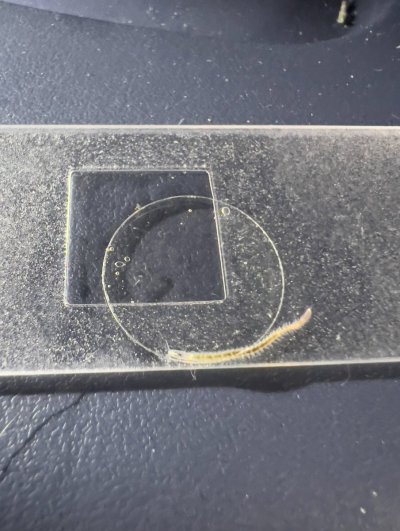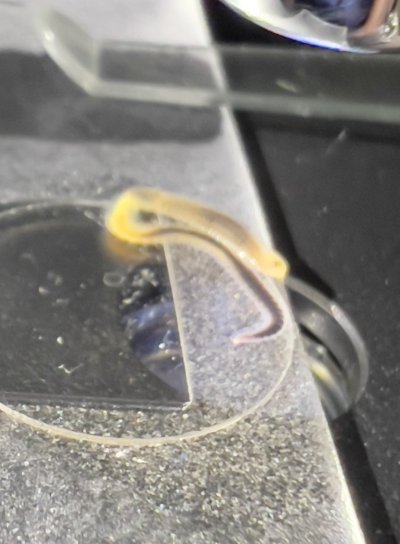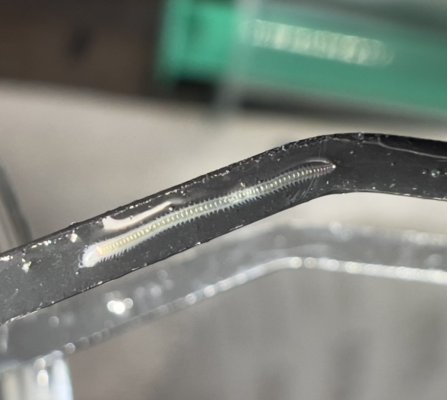It's a Dorvilleidae
Dorvilleid worms are a kind of polychaete (polychaete=bristleworm) - they’re typically harmless/beneficial.@ISpeakForTheSeas YOU TOLD ME IT WAS A BRISTLEWORM! What do they do? Are they still venomous and are they harmful?
Generally speaking, Dorvilleids are harmless/beneficial. Eunicids, on the other hand, can be either harmless/beneficial, mildly risky (think opportunistic predators eating things like snails, small crustaceans, fish larvae, etc. when starved or when the prey is weak enough), or outright predatory. Some are predators while others are literally herbivores (fun fact, even some of the predators - such as the infamous bobbit worm - will still take algae when given the chance). With that in mind, many (possibly most) Eunicids are also harmless/beneficial, so even if it's a Eunicid, it may not be a bad thing.
I’m struggling to see the worm clearly on my phone, but the white collars are found on a few different Eunicid worms (I know a few Eunice spp. and Leodice spp. for sure). These ones tend to be more predatory.But nickm's has a white "collar" and I know there's a specific type of worm with that pattern but can't recall the name.






















